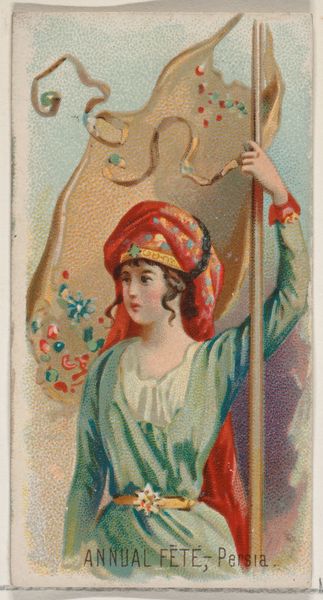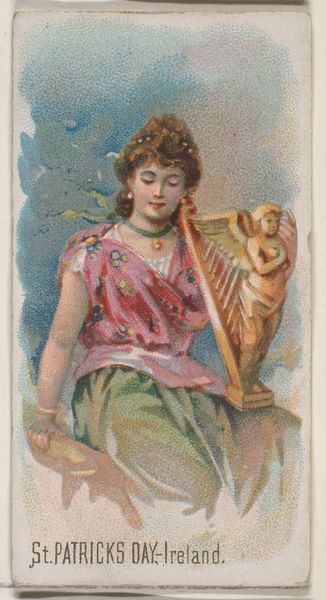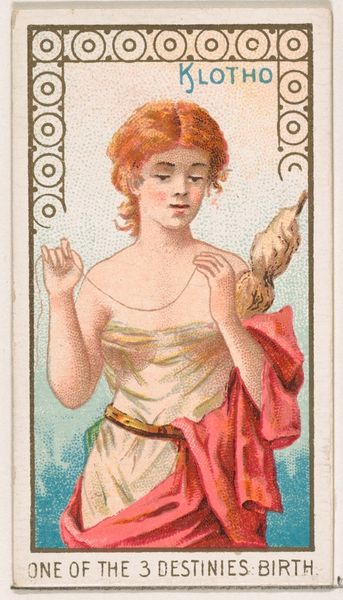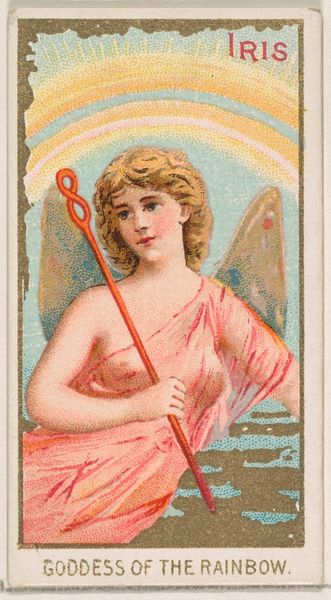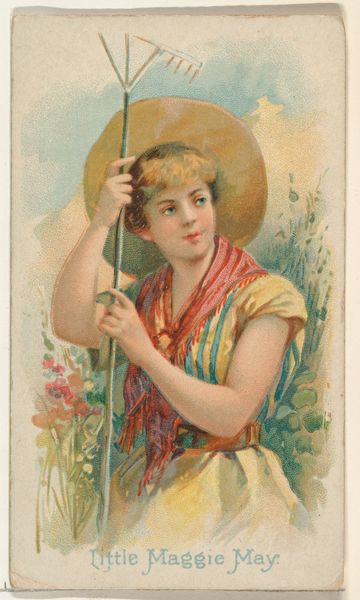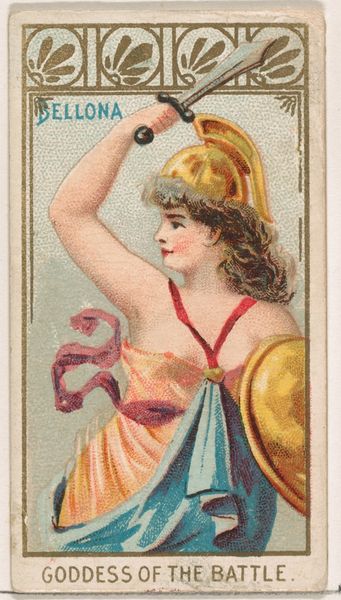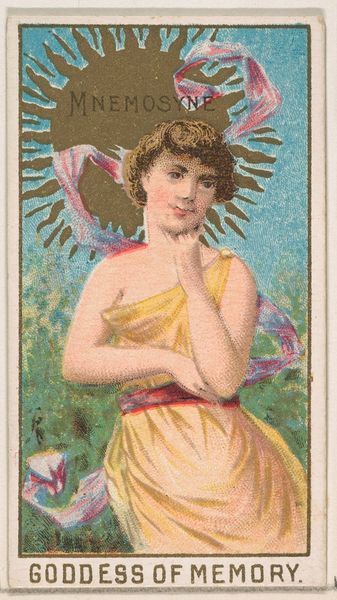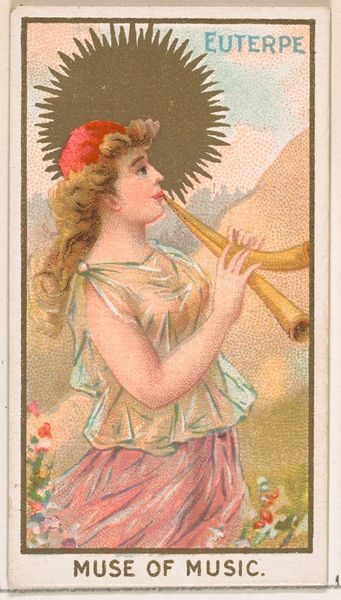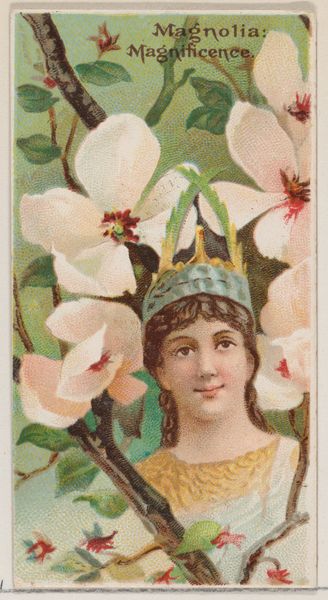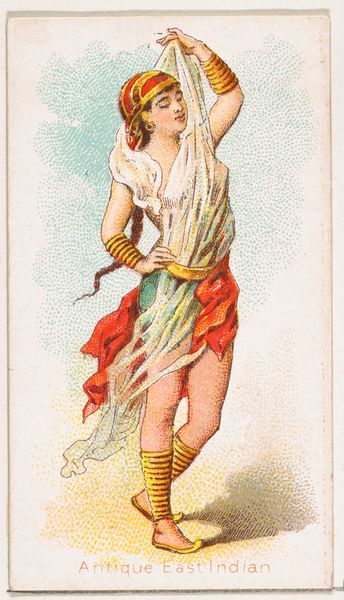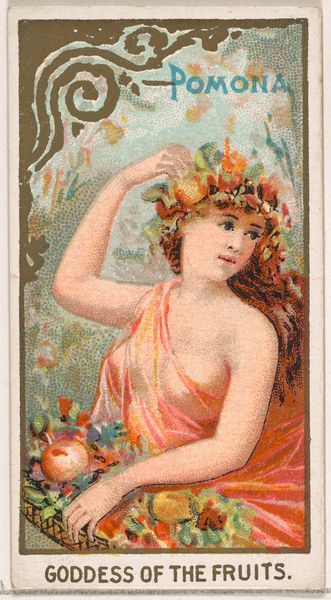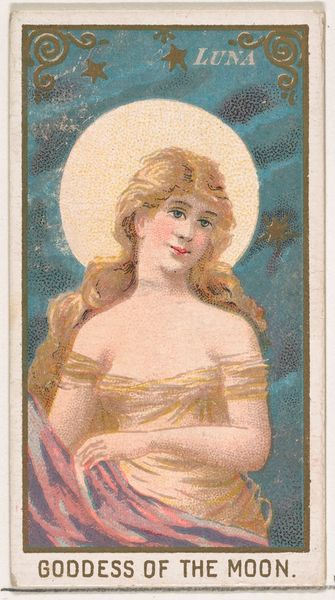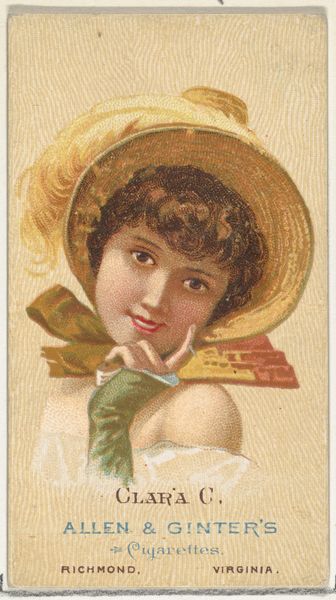
Juno, Queen of all Goddesses, from the Goddesses of the Greeks and Romans series (N188) issued by Wm. S. Kimball & Co. 1889
0:00
0:00
drawing, print
#
portrait
#
drawing
# print
#
caricature
#
portrait drawing
#
history-painting
Dimensions: Sheet: 2 3/4 × 1 1/2 in. (7 × 3.8 cm)
Copyright: Public Domain
Curator: This image of Juno, Queen of all Goddesses, comes to us from a series created around 1889 by William S. Kimball & Co., as a tobacco insert. It’s currently held at the Metropolitan Museum of Art. The primary mediums employed were drawing and print work. What's your first impression? Editor: The face strikes me as very youthful, almost childlike, juxtaposed against the traditional symbols of power: the scepter, the peacock, even that rather severe golden diadem. It's as though a child is playing dress up, imagining what it means to be a ruler. Curator: I agree! There is an interesting disjunction, as if the artist tried to superimpose divine regalia onto an innocent portrait, with an almost cartoon-like affect. The rigid symbols, paired with the softness of her features, present this very uncanny valley. Editor: Absolutely. And that peacock, while visually rich, is more like a hastily added afterthought, its placement feeling somewhat awkward and almost decorative, rather than intrinsically tied to Juno's identity. It is far less grand that the one usually paired with Juno in Roman iconography, it is there almost to check a box. Curator: Right, you sense the limitations of the format; it’s a commercial card after all! They would not have the budget for finer materials like precious metals and fine paints, that are more befitting of depictions of Goddesses. There’s something fascinating about the compression of powerful archetypes into such a small, mass-produced form. I find myself thinking about cultural diffusion, about how these images functioned to democratize myths for consumption in everyday life. Editor: It's true; the mundane nature of its origin contrasts beautifully with the celestial status of its subject. Thinking about these images entering households through tobacco products really collapses the perceived distance between the divine and the everyday, imbuing the common with a touch of ancient grandeur. I find the tension compelling. Curator: Definitely gives you a little jolt to contemplate! It is almost like they were trying to create deities of their own making with such material culture, so that one might attain a divine experience smoking their cigarette of choice! Food for thought indeed.
Comments
No comments
Be the first to comment and join the conversation on the ultimate creative platform.
